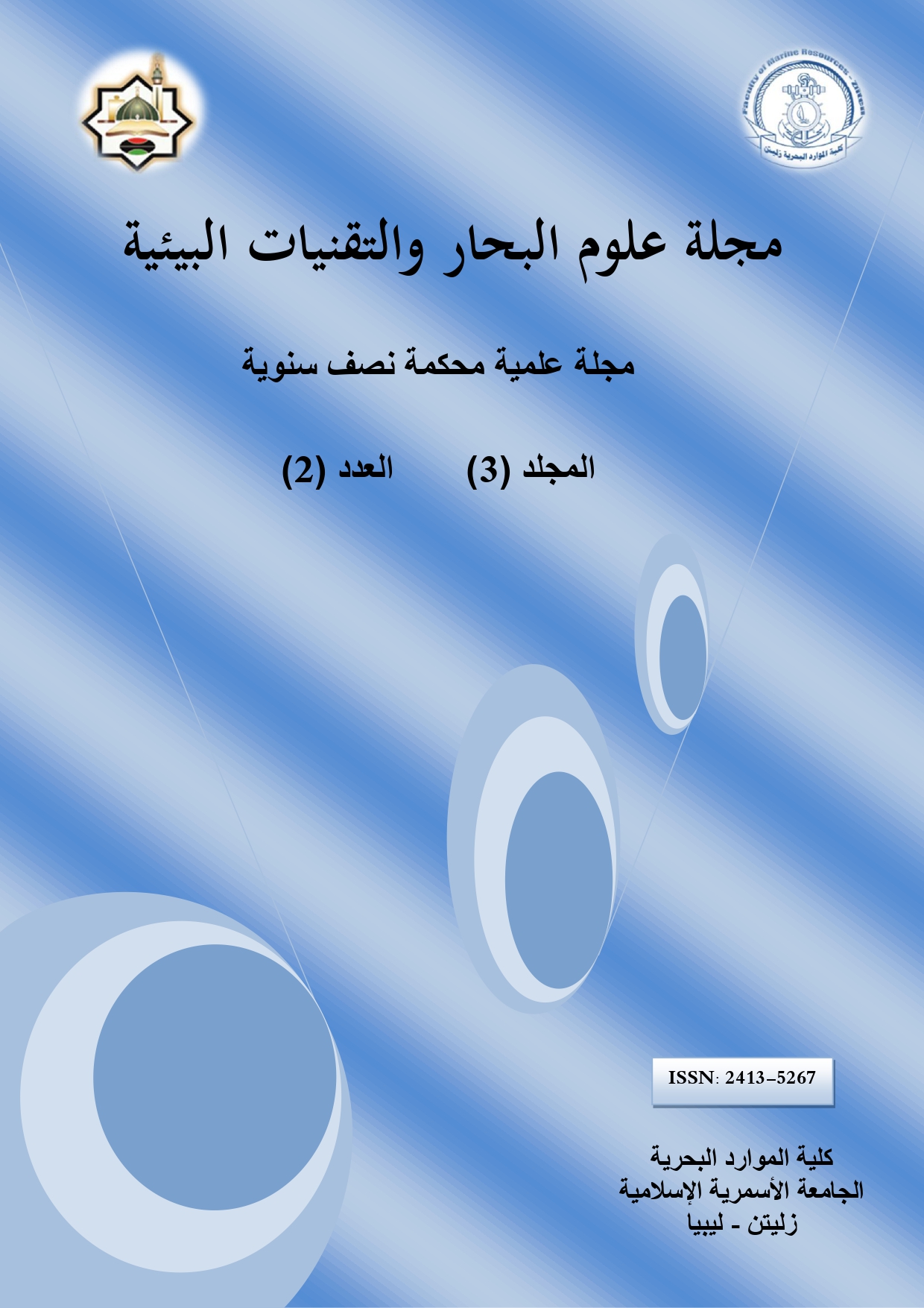تأثير معدل تحميل الجسيمات الصلبة على أداء الفرازات الاعصارية
DOI:
https://doi.org/10.59743/jmset.v3i2.93الكلمات المفتاحية:
الفرازات الاعصارية، تحميل صلب، كفاءة التجميعالملخص
العيب الدراسة المعملية تبيّن تأثير معدل تحميل العوالق الصلبة على كفاءة التجميع وهبوط الضغط خلال الفرازات الاعصارية والخاصة بتجميع العوالق الصلبة من تيار الغاز. اجريت التجارب على أربع أحجام مختلفة للفرازة وهى 7.5, 10, 14 ,16 cmمع أحجام مختلفة للذرات تتراوح ما بين 70 μm الى 510 μm ، ونسب مختلفة للعوالق الصلبة تتراوح مابين 50 الى /kgair .350 gsolid الدراسة المعملية تبيّن تأثير معدل تحميل العوالق الصلبة على كفاءة التجميع وهبوط الضغط خلال الفرازات الاعصارية والخاصة بتجميع العوالق الصلبة من تيار الغاز. اجريت التجارب على أربع أحجام مختلفة للفرازة وهى 7.5, 10, 14, 16 cmمع أحجام مختلفة للذرات تتراوح ما بين 70 μm الى 510 μm ، ونسب مختلفة للعوالق الصلبة تتراوح مابين 50 الى /kgair .350 gsolidبيّنت النتائج أن كفاءة التجميع تقل بزيادة نسبة العوالق الصلبة ،هبوط الضغط خلال الفرازة يقل بزيادة نسبة العوالق الصلبة لحجم الفرازة 10 cm ولا يظهر تأثير لحجم الفرازة الأكبر من ذلك. كما تظهر الدراسة صورة مرئيه لنمط السريان خلال انفصاله.
التنزيلات
المراجع
Avci A., and Karagoz I. (2001). Theoretical Investigation of Pressure Losses in Cyclone Separators. Int. Comm. Heat Mass Transfer, 28(1): 107-117.
Cortes C., and Gil A. (2007). Modeling the gas and particle flow inside cyclone separators. Progress in energy and combustion Science, 33(5): 409-452
De S., Lal A. K., and Nag P.K. (1999). An Experimental Investigation on Pressure Drop and Collection Efficiency of Simple Plate–Type Impact Separator. Powder Technology, 106: 192-198.
Fassani F.L., and Goldstein L. (2000). A Study of the Effect of High Inlet Solids Loading on a Cyclone Separator Pressure Drop and Collection Efficiency. Powder Technology, 107: 60-65.
Gil A., Luis M., and Cortes C. (1999). Effect of the Solid Loading on the Performance of a Cyclone with Bottom Pneumatic Extraction of Solids. Zaragoza, 3.50015: 1-24.
Gil A., Cortes C., Romeo L.M., and Velilla J. (2002). Gas Particle Flow Inside Cyclone Dip legs with Pneumatic Extraction. Powder Technology, 128: 78-91.
Hoffmannc A.C., Van Santen A., Allen R.W.K., and Clift R. (1992). Effects of geometry and solid loading on the performance of gas cyclones. Powder Technology, 70(1): 83-91.
Linden A.J. (1949). Investigations into Cyclone Dust Collectors. Proc. Inst. Mech. Eng., 160: 233-251.
Mori M. (2002). Effect of Solid Loading a PFBC Cyclone. Chem. Eng. Tech., 25(4): 407-415.
Seheid and Massarani (1994). Effect of Design and Operating Parameters on Cyclone Performance. In: Avidan A.A. Editor Circulating Fluidized bed Technology, New York, AICHE, pp.525-31.
Stern A.C., Kaplan K.J., and Bush P.D. (1955). Cyclone Dust Collectors, American Petroleum Institute, New York, USA.
Tuzla and Chen (1997). Experimental Research on the Pressure Drops PV-Type Cyclone Concentrations. In Proceedings of the Symposium on Multiphase Flow, pp. 332-4.
Yuu S., Jotaki Y., Tomita K., Yoshida K. (1978). The Reduction of Pressure Drop due to Dust Loading in a Conventional Cyclone. Chem. Eng. Sci., 33: 1573-1580.
التنزيلات
منشور
إصدار
القسم
الرخصة
الحقوق الفكرية (c) 2017 مجلة علوم البحار والتقنيات البيئية

هذا العمل مرخص بموجب Creative Commons Attribution 4.0 International License.












